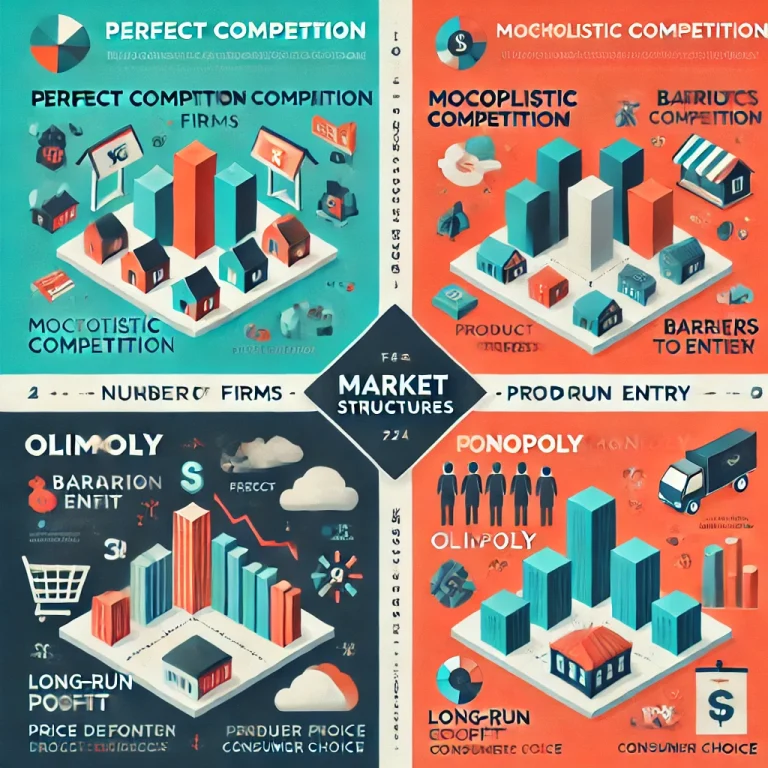Common Misunderstandings of Diminishing Marginal Productivity of Labor
Here are some common mistakes students make when studying this concept, along with correct explanations:
1. Mistake: Diminishing Marginal Productivity Means Total Output Decreases
- What Students Think: Diminishing marginal productivity means that total output starts to decrease as more workers are added.
- Reality: Diminishing marginal productivity means that the additional output from each new worker decreases, but total output still increases (just at a slower rate). Total output only decreases in extreme cases (like overcrowding).
- Exam Tip: Always clarify that total output increases but marginal output decreases.
2. Mistake: It Happens Because Workers Are Lazy
- What Students Think: Diminishing productivity occurs because workers become lazier as more are hired.
- Reality: Diminishing productivity happens because resources are limited (e.g., fixed capital like machines or land). It’s not about worker laziness but about inefficiency due to overcrowding or resource constraints.
- Exam Tip: Emphasize that diminishing productivity is due to fixed capital, not worker behavior.
3. Mistake: It Applies to All Situations
- What Students Think: Diminishing marginal productivity applies to all production processes, regardless of the time frame or inputs.
- Reality: It only applies in the short run, where at least one input (like capital) is fixed. In the long run, all inputs can be increased, and productivity may not diminish.
- Exam Tip: Specify that diminishing marginal productivity is a short-run concept.
4. Mistake: It’s the Same as Negative Marginal Productivity
- What Students Think: Diminishing marginal productivity means that adding more workers reduces total output (negative marginal productivity).
- Reality: Diminishing marginal productivity means that the additional output from each new worker decreases, but it’s still positive. Total output only decreases if marginal productivity becomes negative (which is rare and happens only in extreme cases).
- Exam Tip: Distinguish between diminishing marginal productivity (positive but decreasing) and negative marginal productivity (total output decreases).
5. Mistake: It’s Only About Labor
- What Students Think: Diminishing marginal productivity only applies to labor.
- Reality: It applies to any variable input (like labor, raw materials, or energy) when combined with a fixed input (like capital or land).
- Exam Tip: Mention that diminishing marginal productivity can apply to any variable input, not just labor.
6. Mistake: It’s a Bad Thing for Firms
- What Students Think: Diminishing marginal productivity is a problem that firms should avoid.
- Reality: It’s a natural economic phenomenon that occurs due to fixed resources. Firms can manage it by optimizing their input mix (e.g., increasing capital or improving technology).
- Exam Tip: Explain that diminishing marginal productivity is a normal part of production and not necessarily a problem.
How to Write a Good Answer on Diminishing Marginal Productivity in Exams
Here’s a step-by-step guide to writing a clear and accurate answer on this concept:
1. Define the Concept
- Start by defining diminishing marginal productivity of labor. For example:
- “Diminishing marginal productivity of labor refers to the decrease in additional output produced by each additional worker when capital is fixed.”
2. Explain with an Example
- Use a simple example to explain the concept. For example:
- “Consider a farmer with a fixed amount of land. When the farmer hires the first worker, the worker can plow the field, sow seeds, and water the crops efficiently, producing a high output. When the farmer hires a second worker, the two workers can divide tasks and work faster, but the additional output is less than before. As more workers are added, the field becomes crowded, and workers start getting in each other’s way. The additional output from each new worker decreases, showing diminishing marginal productivity.”
3. Draw a Diagram
- Draw the Total Product (TP) and Marginal Product (MP) curves to show how output changes as more workers are added.
- The TP curve initially rises steeply but flattens out.
- The MP curve slopes downward, showing diminishing returns.
4. Connect to Other Concepts
- Link diminishing marginal productivity to related concepts:
- Law of Diminishing Returns: Diminishing marginal productivity is part of this law.
- Production Function: It shows the relationship between inputs and output.
- Cost Curves: Diminishing productivity leads to increasing marginal costs.
5. Address Common Misunderstandings
- Clarify common mistakes. For example:
- “It’s important to note that diminishing marginal productivity does not mean total output decreases. Instead, it means that the additional output from each new worker decreases.”
6. Conclude
- Summarize the concept and its importance. For example:
- “Diminishing marginal productivity of labor is a key concept in economics that explains how adding more workers to a fixed amount of capital eventually leads to lower productivity. It helps firms make decisions about hiring and production.”
Sample Exam Question and Answer
Question: What is diminishing marginal productivity of labor? Explain with an example.
Answer:
Diminishing marginal productivity of labor refers to the decrease in additional output produced by each additional worker when capital is fixed. This happens because resources like land, machines, or tools are limited, and adding more workers leads to inefficiency.
For example, consider a farmer in India who owns a small piece of land. When the farmer hires the first worker, the worker can plow the field, sow seeds, and water the crops efficiently, producing a high output. When the farmer hires a second worker, the two workers can divide tasks and work faster, but the additional output is less than before. As more workers are added, the field becomes crowded, and workers start getting in each other’s way. The additional output from each new worker decreases, showing diminishing marginal productivity.
It’s important to note that diminishing marginal productivity does not mean total output decreases. Instead, it means that the additional output from each new worker decreases. This concept is part of the Law of Diminishing Returns and is important for firms when deciding how many workers to hire. It also affects cost curves, as lower productivity leads to higher marginal costs.
